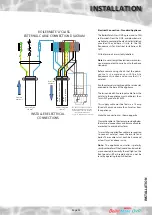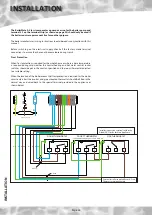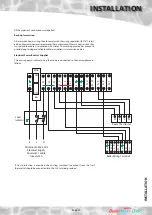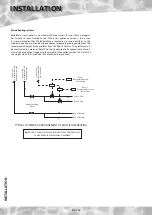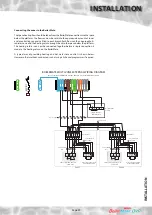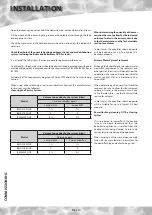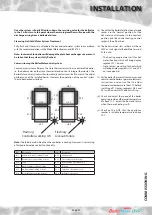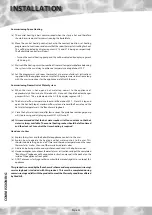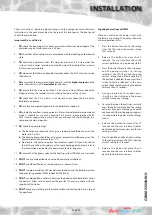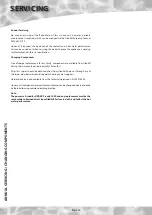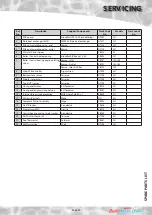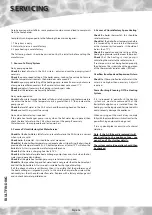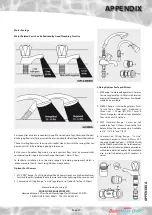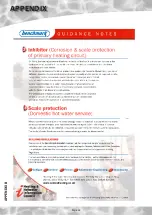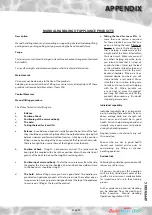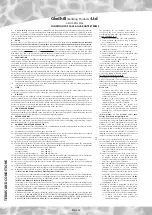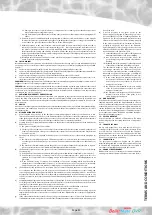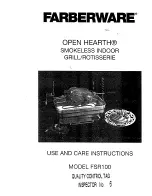
Page 39
APPENDIX
C
APPENDIX
Description
Manual handling means any transporting or supporting of a load (including lifting,
putting down, pushing, pulling, carrying or moving) by hand or bodily force.
Scope
This assessment will cover the largest unit within each product range manufactured
by Gledhill.
For specific weights and dimensions please refer to technical data section.
Main Hazards
Vision may not be clear due to the size of the products.
Adopting an incorrect method of lifting may cause injury, attempting to lift these
products will require help from others. (Team lifts)
Control Measures
Manual lifting procedure
The lift, key factors in safe lifting are:
a.
Balance
b.
Position of back
c.
Positioning of the arms and body
d.
The hold
e.
Taking the lead for team lifts
a.
Balance - Since balance depends essentially upon the position of the feet,
they should be apart about hip breadth with one foot advanced giving full
balance sideways and forward without tension. In taking up this position,
lifting is done by bending at the knees instead of the hips and the muscles
that are brought into use are those of the thigh and not the back.
b.
Position of back - Straight - not necessary vertical. The spine must be
kept rigid, this coupled with a bent knee position, allows the centre line of
gravity of the body to be over the weight so reducing strain.
c.
Positioning of arms and body - The further arms are away from the side,
the greater the strain on the shoulders, chest and back. Keep elbows close
to the body arms should be straight.
d.
The hold - Before lifting ensure you have a good hold. Two handles are
provided on Appliance products at the top rear side, these allow one or
two persons to have a purposely-designed hold at the top of the appliance
to ensure easy lifting at the top of the product.
e. Taking the lead for team lifts- As
more than one person is required
for these products ensure that one
person is taking the lead. This may
be you so ensure that each person
that is helping is made aware of the
weight and of the items listed within
this assessment. Make sure you and
any others helping know the route
you intend to take that it is clear of
any obstructions. Never jerk the load
as this will add a little extra force and
can cause severe strain to the arms,
back and shoulders. If there are steps
involved decide on where you will
stop and take a rest period. Move
smoothly and in unison taking care
to look and listen to others helping
with the lift. Where possible use
a sack truck to move the product
over long flat distances, only lift the
products when necessary. If in doubt
stop and get more help.
Individual capability
Individual capability plays an important
part in handling these products. Persons
above average build and strength will
find it easier and should be in good
health. Persons below average build and
strength may require more rest periods
during the handling process.
Pregnant women should not carry out
this operation.
Persons who are not in good health
should seek medical advice prior to
commencing any lifting or manual
handling operation.
Residual risk
Following the guidelines given above will
reduce any risk to injury.
All persons carrying out this operation
must be fully trained and copies of the
specific risk assessment made available
for inspection and use in their training
process.
Further guidance on Manual Handling
can be obtained from the Health and
Safety Executive. Manual Handling
Operations Regulations 1992.
MANUAL HANDLING OF APPLIANCE PRODUCTS
Summary of Contents for BMAS 150 OVR
Page 38: ...Page 38 APPENDIX APPENDIX B ...
Page 40: ...Page 40 APPENDIX D NOTES ...
Page 41: ...Page 41 NOTES ...

